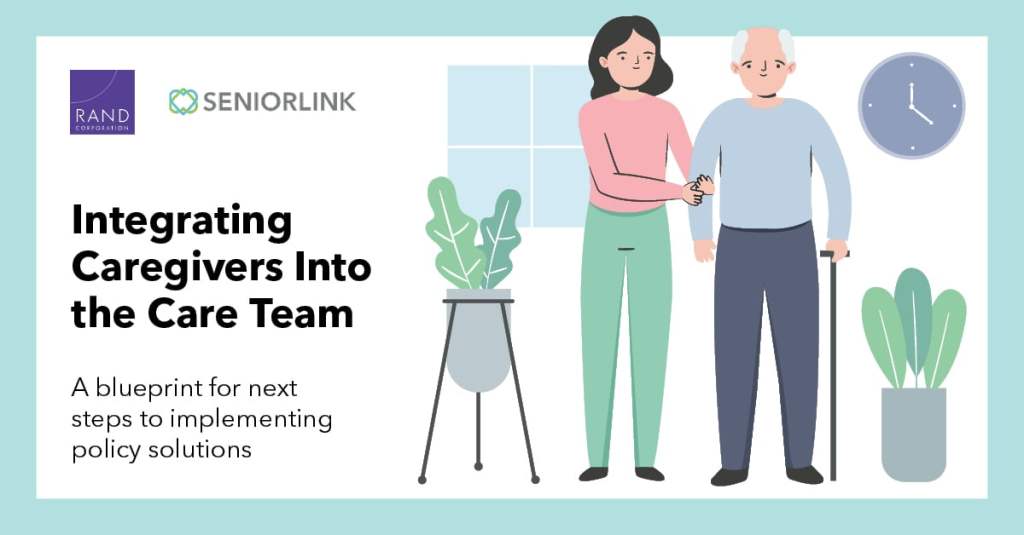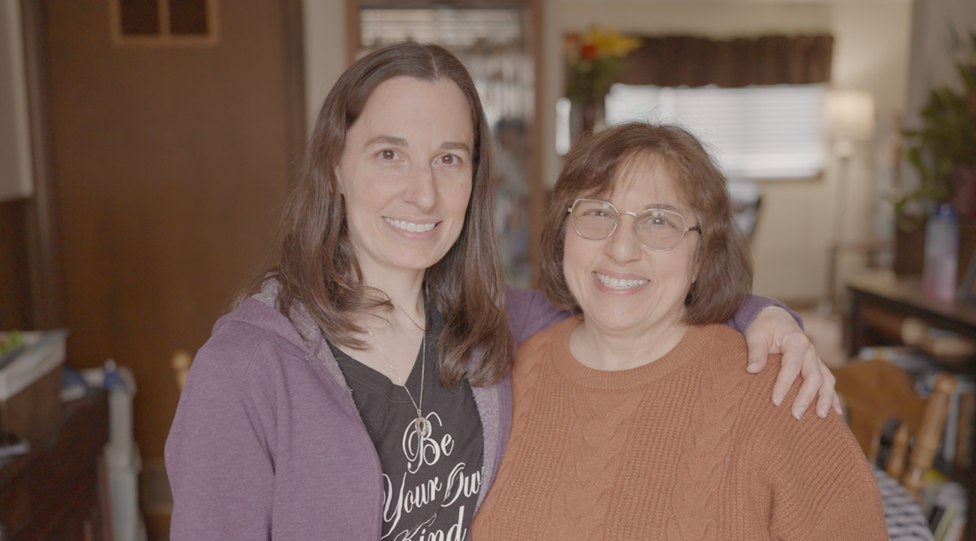
It’s Time to Integrate Family Caregivers Into the Health Care Team
There are 53 million family caregivers in the United States today. These individuals provide critical support and care for older adults and relatives with disabilities. With frequent — sometimes constant — access to care recipients, integrating family caregivers into the formal health care team has many benefits for family caregivers, professional health care teams, and care recipients. Unfortunately, however, family caregivers are often treated as secondary members of the care team, and communication and collaboration are often lacking.
Careforth has collaborated with RAND Health on a report titled A Framework for Integrating Family Caregivers into the Health Care Team, which provides a roadmap for achieving the titular aim. The report takes a thorough look at family caregiving, breaking down barriers of entry and potential policy solutions. Throughout the month of November, which is National Family Caregivers Month, we’ll be exploring the value of integrating family caregivers into the formal care team, through a series of blog posts that cover the RAND reports in-depth and valuable findings.
In this first post in our series, I will identify the value of the family caregiver, the formalization process, and how the COVID-19 public health crisis has exacerbated the need for more formally introducing family caregivers into the care team.
Read the full RAND Health report here
What is Family Caregiver Integration?
RAND’s research focuses on family members caring for adults who need help with everyday activities, such as veterans with disabilities, adults with intellectual disabilities or developmental disabilities, and adults with functional limitations or complex chronic conditions).
Family caregiver integration includes communication, collaboration, and coordination with providers, individuals, or organizations that deliver or help coordinate care for patients. The formal health care team typically includes doctors, nurses, social workers, care coordinators, and other health and care service providers.
What are the Benefits of Integrating Family Caregivers into the Formal Care Team?
Family members typically serve as primary caregivers, and as such, they have direct and ongoing access to their loved ones. In fact, more than one-third of care recipients live with their family caregivers, and 55% of caregivers visit their care recipients more than once a week. Though, family caregivers are often seen as secondary members of the care team.
Because they see their care recipient more frequently than formal health care providers do, family caregivers are better able to monitor changes in their loved one’s health and care needs. Including family members in care collaboration can improve patients’ access to services and reduce patients’ unmet needs.
But that’s not the only benefit of involving family caregivers. When family caregivers collaborate with formal care providers, patients benefit from better quality of care, increased safety, and improved quality of life.
Including family caregivers in the formal care team also offers benefits for the caregivers themselves, such as increased mastery of caregiving, confidence, and self-efficacy, as well as a better quality of life, well-being, and mental health.
For example, in an internal survey of caregivers enrolled in the Structured Family Caregiving program, which is administered by Careforth, 99% of respondents said they felt confident in their ability to manage medical incidents.
Additionally, since the COVID-19 pandemic started, older adults, and particularly ones with comorbidities that would require in-home care, are at a higher risk of contracting a severe form of the virus. They are further exposed if they’re receiving care in institutions or from formal personal caregivers or home health aides. State and local restrictions, as well as recommendations from the Centers for Disease Control and other entities, also make providing care in these settings more challenging.
Opportunities & Current Efforts to Integrate Family Caregivers into the Formal Care Team
In recent years, changes in the U.S. health care system and payment models have increased opportunities for better family caregiver integration. For example, value-based payment models hold health care delivery systems and payers accountable for both the quality and cost of care. With these payment models on the rise, more organizations are reevaluating the factors that improve the quality of care, and there are more opportunities to recognize the work of caregivers.
Most states have passed and implemented the Caregiver Advise, Record, Enable (CARE) Act, which requires hospitals to record the name of family caregivers for a patient in hospital records, consult with caregivers when a patient is to be discharged from the hospital, and provide instructions about medical tasks that the caregivers will need to manage when the patient is released. The Recognize, Assist, Include, Support, and Engage (RAISE) Family Caregivers Act, which became federal law in 2018, created a council of diverse informants charged with developing a national strategy and plan to support family caregivers.
RAND Corporation’s research makes clear the benefits of integrating family caregivers into the formal care team, and doing so is a crucial component in improving the quality of care for aging and disabled adults in the coming years. However, it’s not without its challenges, and while some opportunities and current efforts are underway, there’s a need for more broad-based understanding and implementation of effective family caregiver integration.
In the coming days and weeks, we’ll explore the primary barriers to integrating family caregivers in the formal care team as well as recommended policy directions to address these barriers and support better family caregiver integration to improve outcomes for care recipients.
More insights like this:
-

What Is a Family Caregiver?
Read more: What Is a Family Caregiver?Caregivers, often family members, are the people who regularly provide care for a child or adult who is sick, elderly, or has a disability. Family caregivers take care of their loved ones every day. They help with daily tasks, providing emotional support, and assist with whatever their loved one may need. “Many people…
-

7 Immune System Booster Tips for Seniors
Read more: 7 Immune System Booster Tips for SeniorsThe immune system is the body’s first line of defense against viruses and infections, but the aging process can weaken the immune system. Throughout the COVID-19 pandemic, this became an increased concern for the caregivers of older or immunocompromised adults, as the risk of more severe symptoms and outcomes was much higher in these…
